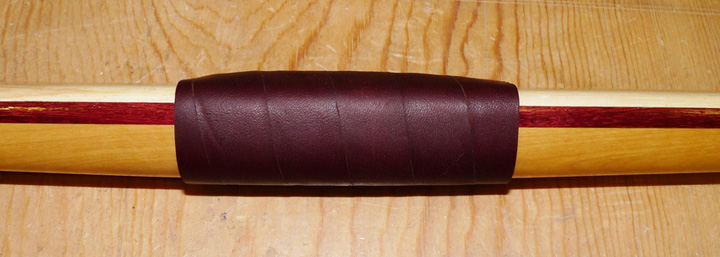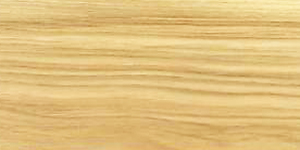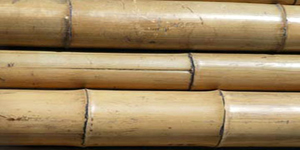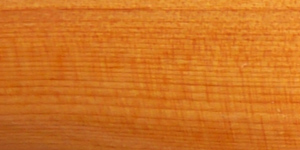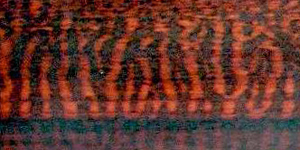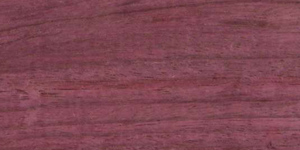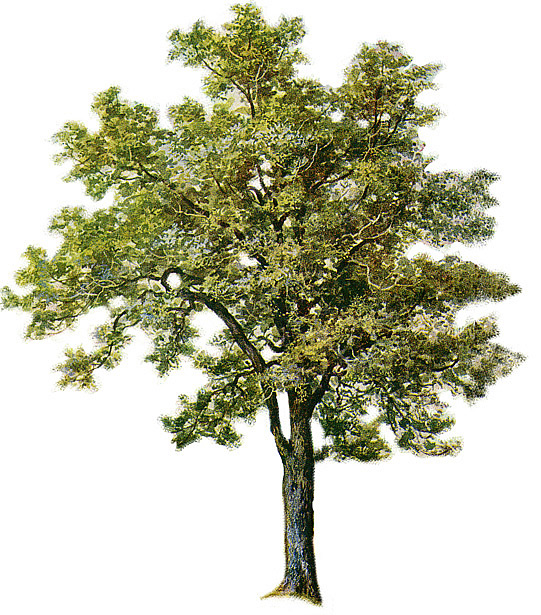Traditional laminated English longbows made from wood or bamboo
.
A brief background Woods and Laminations Backings Belly's Cores Preparing the wood Gluing the stave Making a Laminated Longbow
A Brief Background
Using laminated materials to make bows is a technique that dates back far into antiquity but using all wood laminates to make bows in the style of an English longbow is a process developed by the bowyers of England during the 18th century and continued to this day.
The traditional English longbow (a self bow with no backing) was made from top quality yew and proved to be a highly efficient and durable design. Though other woods were used it was found that yew is the only real choice for handling the demands of the English longbows design.
In the 18th century archery became a popular sport and pastime in England, which in turn prompted a demand for longbows that made top quality yew (rare in Europe since medieval times) hard to get hold of. It may have been this shortage that prompted the development of laminated wood longbows with the aim of reproducing the qualities and performance of a self yew English longbow.
Through experimentation and trial and error bowyers soon discovered which were the best woods to use and how to put them together. The basic rule of thumb was to have the back of the bow made from an elastic wood with resilience to stretching and splitting and to make the belly of the bow from a wood with a high resistance to compression forces.
Using the right woods and construction techniques it was possible to make longbows that were both durable and had a high performance.
Green man Longbows continues this tradition, making top quality, high performance laminated longbows using the knowledge and experience of these bowyers along with the added advantages of modern machinery, glues and the best woods from around the world.
Though it would be possible to use virtually any type of wood and any number of laminations there are a number of tried and tested choices and combinations for making laminated wood longbows.
The most simple configuration for a laminated wood longbow uses two strips of wood in a way that mimics the qualities and appearance of a self yew English longbow, a thin backing strip (usually 1/4 of an inch or less thick) and a thicker belly strip, these are known as bi - laminated bows. The most common and generally considered the best configuration for a laminated bow is a Tri - laminate that incorporates a third, core wood.
Backings
For the back of the longbow the most widely used wood is hickory. The main reason for using hickory is for its strength and high resistance to elastic forces. Another reason for using hickory is that it is generally has a straight grain with very few knots or defects.
Hickory
Bamboo
Another backing that is widely used and gaining in popularity is bamboo. Though bamboo is strictly speaking a member of the grass family it works well and and has properties very similar to wood, including a high resistance to elastic forces. Hickory and Bamboo are the best and most reliable backings but lemonwood, Ash and maple can also be used on low Poundage, longer length longbows.
Belly's
The belly of a laminated longbow needs to be made from a wood that has a high resistance to compression forces without displaying any fretting or cracking. With the exception of yew, the most suitable woods used for belly laminations are generally tropical hardwoods or woods with a similarly high specific gravity (density).
Some of the best wood choices for belly laminations are lemonwood, bloodwood, (Santos) rosewood, snakewood, and of course yew.
Rosewood
yew
Lemonwood Snakewood
Other bowyers use many other woods for belly strips in their bows, such as Osage orange and Ipe, but in my experience of making laminated bows over many years and after many conversations with my customers about other bows they have owned and their experiences with them I have decided that most of these other woods are just not reliable or durable enough to ensure a good bow and as such I no longer use any of these woods in my bows.
Cores
Another effective and popular configuration in laminated longbows uses a third strip, (known as the core) between the back and belly. Cores are generally no more than 1/4 of an inch thick and often taper towards the bows tips. Cores experience mostly compressive forces and as such can be made from all the woods used for belly's. They can also be made from woods that are characterised by their stiffness and stability such as purpleheart, Bloodwood, Paduke, Pau amarilo and greenheart. Through years of experimentation and experience I feel Purpleheart is probably the best all rounder for a core strip.
Purpleheart Greenheart The advantages of using a core strip can be that they act as a buffer between the back and belly, increasing their effectiveness and helping to spread the loads and forces in the finished bow. They also give an amount of stiffness and stability to the bow and in certain cases can reduce the development of string follow. Using multiple cores will impart a higher degree of stiffness to the bow.
The reason that cores are often tapered is to ensure the proportions of the different woods used remains similar throughout the length of the limbs on the finished bow. This allows the forces to be distributed more equally and evenly and creates a smoother and sweeter draw.
Preparing the wood
The woods used in laminated longbows are generally very tough and can only really be prepared using woodworking machinery. A bench saw is needed for cutting the strips and a planer thicknesser or sanding thicknesser for giving them a smooth flat surface.
The strips of woods used in a longbow, (particularly the backing strip), are usually cut in a way so that the growth rings run in straight vertical lines across the width of the strip, and also run straight for the length of the strip.
This is done because if the strips were cut so the rings ran in horizontal lines across the width of the strip then the natural waves and undulations of the wood would inevitably lead to one or more growth rings being cut through somewhere along its length in the process. These points would be weak spots that if found on a backing could lead to failure.
The width of the strips is a matter of choice but finished longbows are usually between 1 and 1 1/2 inches wide at their widest point.
The thickness of the strips can depend on the woods used, the intended draw weight for the bow, how many laminations there are going to be and whether or not there is going to be a distinct handle. As a guide, when I am making a standard three laminate longbow I would cut a hickory backing strip that was 3/16 thick, a purpleheart core that was 1/4 thick (before tapering) and a lemonwood belly strip that was between 3/4 and 1 inch thick.
Gluing up the stave
The wood strips should be made as flat and smooth as possible to ensure the best gluing surface. There are a number of different glues that can be used, 'Cascamite' and 'Resorcinol resin' being tried tested and reliable.
The most important part of the gluing process is to clamp the strips together with an adequate amount of equally dispersed pressure. One of the best ways is to tightly bind the glued wood with a rope or cord with slight elasticity, (a long strip cut from rubber innertube also works very well and is my preferred way of gluing staves). Clamping is method also used by some bowyers, though it can be tricky to ensure a thorough and consistent pressure can be applied to the stave. Placing the strips on a stiff plank before or after binding ensures the stave doesn't twist or warp during drying.
Sometime a small amount of recurve is introduced to the stave before the glue is dry to counteract the natural stretching of the wood during the tillering process, with the intension of creating a tillered bow that has a straight profile. Care must be taken though as too much recurve can cause problems in a finished bow that can then develop uneven and power draining 'string follow' due to the overly un-natural tensions and forces imparted to the wood in a highly recurved stave.
Making a laminated longbow
Once the glue is fully dry (to play it safe, at least a week in room temperature) the stave is ready to make into a longbow or war bow. Using the best woods and techniques of construction laminated bows can be made that are safe, durable and reliable, up to a draw weight of around 70lb.
The first thing is to draw a centre line down the back of the stave that will act as a reference point for the whole bow making process. The outline of the bow is then also drawn on to the back. The shape and dimensions of the outline depends on the style of the bow, the intended draw weight and to a certain extent the woods used in the bow. The outline is roughly cut using power tools then finished up later during tillering using hand tools.
A rough approximation of the belly's outline is then drawn on the side of the stave. The shape of this line also depends on the bows design and specs and also must be oversized enough to allow full tillering using hand tools. When this line has been cut the stave looks more like a bow but is still far too stiff to bend. It is now ready for shaping and tillering.
The shaping of the bow is done using a variety of hand tools including draw knife, spoke shave, cabinet scrapers and various files. The traditional D shaped cross section is formed along the bows limbs usually becoming more circular at the tips.
Tillering the bow (assessing and creating the required bend in the bow) begins along with the shaping process. The main points to address when tillering are whether the bow is going to bend in the handle or not and whether the bow is to have a symmetrical or asymmetric design. Draw length and weight are also deciding factors in shaping the bow. A symetrical bow (both limbs the same length) works very well and will have much less hand shock than an asymmetric bow. Also because both limbs are tillered to have the same amount of power, a symmetrical bow will hold its power much better over the years and will not develop strong (and power losing ) string follow in the shorter lower limb that is a common and often seen problem in aged asymmetrical bows.
Although some of the woods used can be extremely tricky to work on, tillering a laminated longbow is generally much easier than tillering a self bow . The woods used are usually free from knots and defects and combining them in laminations also helps to create stability. Following the basic shape of the bows outlines as a guide the bow is tillered to form smooth uniform bends in each limb. The wood of the bow is sanded and smoothed with a 600 grit paper and then finished with either Danish oil or varnish.
Green Man longbows are usually fitted with buffalo horn nocks and a leather hand grip and can be made to your choice of design, draw weight, draw length and the woods used.

